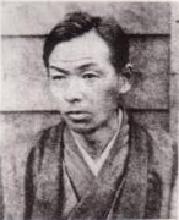Last updated: June 28, 2017
On April 1, 1889, Higashinaganuma was under the jurisdiction of the Head Office of the Five Villages Union. The six villages of Higashi-Naganuma, Yanoguchi, Daimaru, Hyakumura, Sakahama, and Hirao became one village through the unification of towns and villages following the promulgation of the town-village system, and ``Inagi Village'' was born. The name Inagi was the new name of the village at this time.
With the birth of Inagi Village, on April 25 of the same year, elections were held for the village council at Jorakuji Temple in Higashi-Naganuma, and 12 members were elected.
Furthermore, on June 8th, Seinosuke Mori was inaugurated as the first village chief after a resolution of the village assembly.
At that time, Oshidate Village, which was under the jurisdiction of the head office of Kamisomeya Village, Kitatama District, came to belong to the newly created Tama Village.
In this way, due to the town and village system promulgated in 1899, Inagi Village and Tama Village were born in the following year, 1888, and the previous villages that had existed since the Edo period were abolished, and Oaza (Oaza) within the village was abolished. I will continue to live as a bruise.
When it comes to mergers of towns and villages, the government will change the names of new towns and villages to the Omachi village name in the case of an absorption-type merger (Kyushu Gappei), and the old village name in the case of an equal merger (Taito Gappei) to the "Sango Sechu" name. )” and then named it.
In the case of Inagi Village, there were no prominent large villages among the six villages that would make up the new village, and it is thought that a new village name through a merger of equals was considered from the beginning.
As the merger movement progressed, various candidates for the name of the new village were proposed and considered, but unfortunately, no historical documents related to the naming of the new village have been confirmed to date. The origin of the place name "Inagi" cannot be clarified.
However, there are legends and old studies that remain, and I would like to introduce them to you.

Seinosuke Mori, the first mayor of Inagi Village
The late Takuzou Kawashima of Higashi-Naganuma tells the story of his father, Kichizo Kawashima.
According to this, Kubozen, the founder of Keigi Juku, was approached by Seinosuke Mori, who was the head of the five-village union outside Higashi-Naganuma and later became the first village head, to discuss the name of the new village. Ryo (Ryo Kubo) proposed two candidates, ``Inaho'' and ``Inagi,'' and in the end, ``Inagi'' was selected.
In selecting Inagi, there were forts (Ozawa Castle, Naganuma Castle, and Omaru Castle) in Yanoguchi, Higashi-Naganuma, and Daimaru. It is said that they took into consideration the historical fact that this area was a rice-producing area and has been producing good quality rice since ancient times. (From Takuzo Kawashima, “Kubozenryo Sensei and Keigi Juku” published in 1986)
In addition, the late Masayoshi Ishii of Komae wrote the Musashinogo Land Name Draft (draft) around 1932 and 1933. (Komae City, owned by the late Mr. Kanjo Ishii) says, ``Inagi Village should be called Inage Village, but without permission, Inagi was given the name Inage because of its meaning.''
It is not clear on what basis this historical document was mentioned, but the name ``Inage Village'' was initially chosen and submitted to Kanagawa Prefecture, but permission was not obtained and the name was changed to the literal meaning. ) was named ``Inagi Village''.
The above two points are the only confirmed records regarding the origin of the village name ``Inagi''. Let's consider these two theories next.
The history column of the ``Testographical Geographical Compilation Investigation Book'', which was created in 1886, three years before the birth of Inagi Village, contains historical records of six villages within the city area. History is recorded.
If you look here, the text is almost the same for each village, and it says, ``Ancient history unknown, Inage Saburo Shigenari from the time of Kamakura prefecture, Shigeyuki Inage's territory, Sakon Ozawa of the later Shigenari tribe, Kannobu Shigeyuki, and Ozawa left from the Oan era. There are descriptions such as ``Emon no Kuni Takano wo ryosu''.
It is written that this land was the territory of the Inage and Ozawa clans during the Kamakura period.
It can be said that the people of the village during this period shared a common historical understanding of ``Inage'' and ``Ozawa.''
For this reason, it would not be surprising if ``Inage'' was chosen as the new village name, but it is unknown why that name was rejected and ``Inagi'' was later changed.
In any case, when it came to creating a new village, many people had their ideas, and after much consideration, they may have finally settled on Inagi.
At present, the origin of the place name "Inagi" cannot be revealed, but we hope that new concrete historical materials will be discovered in the future.
Note: Please see the following document for details.
“Inagi City History” Volume 2 (published by Inagi City in 1991)
“Inagi’s History” (published by Inagi City in 1991)

Zenryo Kubo, founder of Keigi Juku
Inagi City Education Department Lifelong Learning Division Tel: 042-377-2121